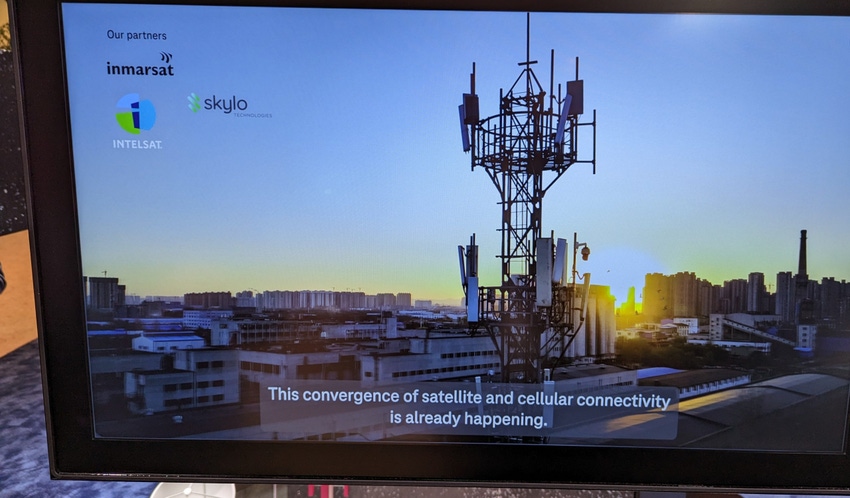German operator Deutsche Telekom is about to start using satellite to ensure full global coverage for its Internet of Things offering.
March 1, 2023

German operator Deutsche Telekom is about to start using satellite to ensure full global coverage for its Internet of Things offering.
The company is working with Intelsat and Skylo to add satellite to its existing terrestrial IoT networks – including NB-IoT, LTE-M, 4G and 5G – to create what it calls a global network of networks. It has already tested various use cases and plans to launch a commercial offer in the second quarter of this year.
“With integrating satellite connectivity into our T IoT offering we are reshaping the future of global IoT networking,” said Dennis Nikles, CEO of Deutsche Telekom IoT (T IoT). “Our customers now have a ‘network of networks’ with ubiquitous connectivity which enables completely new possibilities.”
Those possibilities include networking wind turbines in remote regions, recording water levels and weather data, and providing decent broadband connections out at sea. Deutsche Telekom and its partners – Intelsat and Skylo; more on them below – are demonstrating the first use cases at Mobile World Congress in Barcelona this week. They are, of course, interesting in their own right. But there’s also something else to point out here.
One can’t help but notice that Deutsche Telekom is using the kind of language we have started to hear around future 6G networks.
There is a growing belief that 6G cannot simply be an evolution of 5G as a cellular technology. The use cases being bandied about – it’s early days, but we’re talking a merger of the digital physical worlds, services based on holograms and robotics, and of course the much-hyped metaverse – require ubiquitous coverage in order to be a success. And cellular will struggle to deliver that kind of coverage alone. 6G will likely require multiple network types to work together, including cellular, other wireless technologies, fibre networks, satellite and so forth.
Deutsche Telekom doesn’t refer to 6G in its satellite IoT announcement, but it’s a pretty safe bet that behind the scenes it is looking ahead to what the next generation of mobile technology might look like.
Back to the present though, and the German operator is focusing on that IoT offer.
It says it will launch “an attractive offering for convergent connectivity” in the April-June quarter. The offer will be based on its IoT Hub, which it describes as an orchestrator for universal connectivity across mobile and satellite networks; essentially, it’s there to remove a lot of the complexity and bring various IoT systems together. The appropriate hardware, such as a satellite terminal or router, plus an installation service can be booked as an option, the telco said.
Companies from various industries are already testing the offer, Deutsche Telekom said, namechecking Germany’s Lanthan, which is networking wind turbines in remote areas that lack mobile coverage; and Divirod and the German Federal Waterways and Shipping Administration (WSV), who are collecting data on water risks.
Its partnership with Intelsat, which boasts a global satellite infrastructure, is central to the network of networks IoT offer. Deutsche Telekom noted that it is working with Intelsat for more broadband applications, while Skylo will help out with NB-IoT devices. Skylo opens the use of convergent cellular devices for companies for their IoT applications for the first time, the operator explained, noting that NB-IoT-capable device or modules will be able to connect to the satellite network without the need for any extra hardware, then switch between terrestrial and non-terrestrial networks (NTNs).
At the end of this year Deutsche Telekom plans to launch an early adopter developer programme to enable developers to test convergent end devices for the first time. There’s a lot of promise here. And ultimately it could go further than IoT applications.
Get the latest news straight to your inbox. Register for the Telecoms.com newsletter here.
About the Author(s)
You May Also Like








.png?width=300&auto=webp&quality=80&disable=upscale)


_1.jpg?width=300&auto=webp&quality=80&disable=upscale)


.png?width=800&auto=webp&quality=80&disable=upscale)